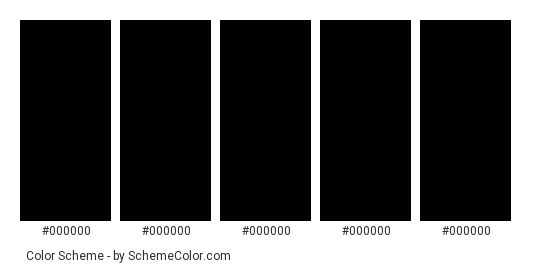Human skin color can vary widely around the world, ranging from pale to dark brown. This is due to differences in melanin levels as well as blood oxygenation and circulation. There are a few main factors that contribute to natural skin color in humans.
Melanin Content
The biggest factor affecting skin color is melanin, which is produced by cells called melanocytes. Melanin is a pigment that gives skin, hair, and eyes their color. People with more melanin in their skin typically have a darker skin tone, while those with less melanin have a lighter skin tone.
There are two types of melanin:
- Eumelanin – This is black/brown melanin that produces darker pigmentation.
- Pheomelanin – This is red/yellow melanin that produces lighter pigmentation.
The ratio of these two melanins determines your natural skin color. Higher levels of eumelanin result in darker skin, while higher levels of pheomelanin result in lighter skin.
Genetics & Ethnicity
Melanin levels are primarily determined by genetics and ancestry. Your ethnicity affects how much eumelanin vs pheomelanin your body produces:
- African and Indigenous ethnicities produce the most eumelanin, resulting in darker skin tones.
- European ethnicities produce more pheomelanin, resulting in lighter skin tones.
- Asian ethnicities produce a balance, resulting in medium skin tones.
In addition to affecting melanin, your genetics can also impact how your skin reacts to sun exposure.
Sun Exposure
When your skin is exposed to UV radiation from the sun, it causes your body to produce more melanin. This melanin darkens your natural skin color in a process called tanning. Areas of skin that get more sun exposure will become darker.
Different skin tones tan differently in response to sun exposure. People with lighter natural skin will tan more easily. People with darker natural skin are more protected from UV radiation by the higher melanin levels, so they tan less.
Blood Circulation
Another factor that affects skin color is blood circulation. The amount of blood flowing close to the surface of the skin impacts skin tone. When blood vessels dilate and more blood circulates through the skin, it can give the skin a redder, pinker appearance. Areas of skin with less blood flow can appear lighter.
Blood circulation and oxygenation levels can be impacted by:
- Temperature – Cold temperatures constrict blood vessels, making skin look lighter. Heat causes vessels to dilate, making skin redder.
- Health conditions – Some illnesses can affect circulation and blood oxygen levels.
- Physical activity – Exercise causes blood vessels to dilate, bringing more blood to the skin’s surface.
Unique Skin Tones
While genetics play a major role, each person’s skin tone is still unique. Even within families, skin tones can vary depending on melanin levels and tanning ability. Exposure, health status, and age can all impact an individual’s skin tone.
Newborns often have a reddish skin tone that darkens within a few days after birth as they start to produce more melanin. As people age, decreasing collagen and melanin levels may result in more pale or greyish skin tones.
Skin Color Distribution
While individual skin tones vary, human skin colors fall within a certain range on the color spectrum. Here is an overview of the distribution of natural skin colors around the world:
| Skin Tone | Distribution |
|---|---|
| Pale / Fair | 10-20% of world population |
| Light / Medium | 20-30% of world population |
| Medium / Olive | 30-40% of world population |
| Tan / Brown | 15-25% of world population |
| Dark Brown / Black | 5-15% of world population |
As you can see, medium skin tones are the most common worldwide, though there is significant variation.
Measuring Skin Color
Skin color can be measured scientifically using special instruments that quantify the light reflected off the skin. This data is used to categorize skin tones.
One common system is the Fitzpatrick Skin Type scale, which classifies skin into 6 types based on pigmentation and reaction to sun exposure. It ranges from Type I (pale white skin) to Type VI (deeply pigmented dark brown/black skin).
Another way skin color is quantified is through the Individual Typology Angle (ITA°). This scale measures skin tone on a circular scale from 0° to 90°, with lower values corresponding to lighter skin and higher values corresponding to darker skin.
Hex Codes for Skin Colors
In design programs like CSS and HTML, skin colors are often represented using hexadecimal color codes. Hex codes are six-digit codes preceded by a # sign, combining RGB values for the primary colors red, green, and blue.
Here are some approximate hex color codes for different skin tones:
| Skin Tone | Hex Color Code |
|---|---|
| Pale / Fair | #FFDBAC |
| Light / Medium | #FDAA7A |
| Medium / Olive | #D27D46 |
| Tan / Brown | #AD5533 |
| Dark Brown / Black | #512819 |
Keep in mind these are rough estimates, as each person’s skin tone is unique. The hex codes can be lightened or darkened to match an individual’s specific coloration.
Conclusion
Human skin color is complex and multifaceted, influenced by genetics, melanin levels, sun exposure, and circulation. While individual skin tones are unique, they generally fall along a spectrum from pale to dark brown/black. Hex color codes like #FDAA7A and #AD5533 can be used to represent the wide variety of human skin colors that exist around the world.

